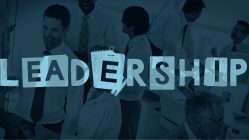Pre-pandemic, the option to work-from-home was presented to employees across organisations as a perk. Something they could use as a one-off instance during the month when they needed to take a breather or take care of some personal business during their routine 9-to-5. Little did we know that 2020 would usher the global workforce into an almost permanent state of work-from-home. As a result of COVID-19, industries the world over have had to shift to remote modes of managing work in order to ensure business continuity. As per a report by Global Workplace Analytics, there has been an increase of 173% in the number of people working from remote locations.
While the initial days of ‘remote access’ started off a bit rocky, as we’ve gotten deeper into this new era of virtual collaborations, organisations have been able to mould and adopt new strategies to ensure the highest levels of efficiency. In fact, 75% of those operating away from the office environment noticed a rise in their productivity due to numerous reasons ranging from fewer distractions to less time spent on travel.
However, even though this disruptive alternative offers myriad benefits, it has posed multiple challenges for human resource managers across the board. The HR team is the custodian of a company’s most priceless resource – its workforce. It plays a crucial role in providing direction, motivation and guidance. In this new normal, while productivity has seen an upward trajectory, here are some challenges that HR teams have to constantly work around to ensure its sustainability.
One-on-one Interface
Humans are social creatures and our ability to evolve is largely dependent on our daily social interactions. Given that a major chunk of a working professionals’ day is spent in an office environment, social interactions with management and colleagues is what helps him or her to grow. Being able to build a community where there is a free flowing exchange of ideas and conversations is a vital aspect of an HR manager’s duties. During the conventional days, open communication channels that were facilitated by in-person conversations worked wondrously in accelerating workforce satisfaction, retention and eradication of grievances. However, with remote working, while not impossible, it is difficult to attain the same level of comfort over online calls and videoconferencing as compared to in-person meetings.
Tracking work and policy implementation
While the work-from-home transition has seen an incredible spike in productivity, being able to monitor, track and guide, in order to ensure that there is an equal contribution across a dispersed workforce is a mammoth task. Since the job done by no two departments is the same and the internal structures are highly dynamic, it became a task for managers to devise strategies that are all-pervasive, wholesome and thorough in terms of maintaining a progress report. Change is never a welcome factor and when paired with almost overnight turnaround timelines, the expected response wasn’t going to be resoundingly positive.
Being able to build a community where there is a free flowing exchange of ideas and conversations is a vital aspect of an HR manager’s duties. During the conventional days, open communication channels that were facilitated by in-person conversations worked wondrously in accelerating workforce satisfaction, retention and eradication of grievances.
Under the purview of remote working, it is tough to effortlessly implement policies as one can no longer consult, discuss or share with their employees on an immediate basis. Further, while communicating over servers, the meaning of the message tends to get deteriorated and optimum results often take a longer time to be achieved. However, with time, as individuals got a clearer picture of the new protocols and as the reality set in that the current situation might be a long-term one, the global workforce has gradually become comfortable with new policy modifications.
Building trust
These are indeed uncertain times and employees are looking for workplaces that offer them a sense of safety and security. Amidst a pandemic, with news of furloughs and pay cuts as well as the clear and present danger of resource burnout, it is imperative for HR managers to build symbiotic, robust and long-lasting equations with team members, especially with those who have joined in recent times. By setting clear expectations and optimising communication channels, HR professionals are continuously adapting their employee approach, to build a safe space of trust.
Retaining talent
While attracting the right people is vital to an organisation, retaining them is equally, if not more important. A study by HBR states that 33% of all recruits look for a new opportunity within the first six months, whereas 23% fail to complete one year at their workplace. In the current scenario, the parameters for retention have dramatically changed. While productivity has increased, so have work hours and the workforce of 2020 has definitely seen increased levels of stress to perform. Today a company’s ability to retain employees is a combination of modern technological offerings for their seamless working as well as the space to grow and develop at both personal and professional levels. Further, flexibility is yet another deal-maker.
Setting company culture
With self isolation and disrupted routines, working professionals across the globe have experienced a significant impact on their mental health. In this regard, the HR’s role is pivotal in keeping up the morale and channelling their resource’s energy towards productive alternatives. A consistent focus on the training and development of employees, demonstrates the organisations vested interest in their overall growth. This, in turn, motivates them to work towards achieving the objectives of the company whilst fulfilling their personal goals as well. Further, practices like virtual fun activities, special-day wishes, precise directions; prompt problem resolution and several others are proving to be game-changers, allowing organisations to nurture a sense of community and belonging.
Interviewing, hiring and on-boarding
These are the three key activities that determine the quality of the workforce. Face-to-face meetings have always been the most effective way to determine a candidate’s potential and acumen. Further, the establishment and explanation of company norms, beliefs, goals and plans were effortless in an office environment. However, as employees are working from home, all these procedures are now being shifted to online mediums. This makes it difficult for HR managers to not only identify the right resource for the job but also, limits their ability to intervene in order to accelerate and guide these resources through their journey in the organisation. Another study by HBR suggests that it takes approximately eight months for a new hire to reach full productivity and understand the ways of an organisation. However with the new working arrangements these timelines have extended significantly.
Resilience and agility will be key in determining the mettle for most HR professionals across the globe. As we continue to deal with the new pandemic-dynamics and enter a new ‘work’ order, HR managers will need to continue to push boundaries in order to create holistic remote work environments. Equipped with the right tools and honing our skills to adapt, innovate and collaborate, we will be at the helm of driving and optimising the workplace of the future.
























